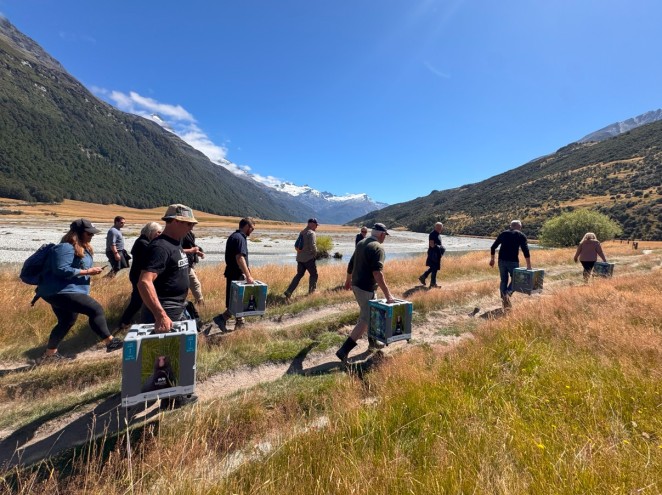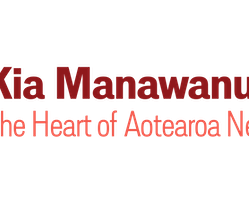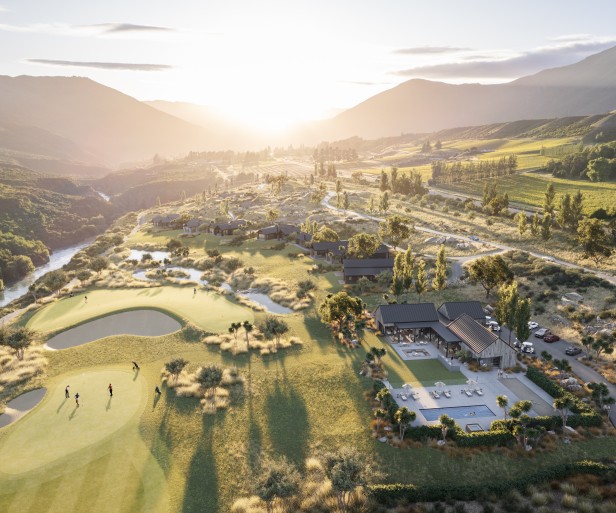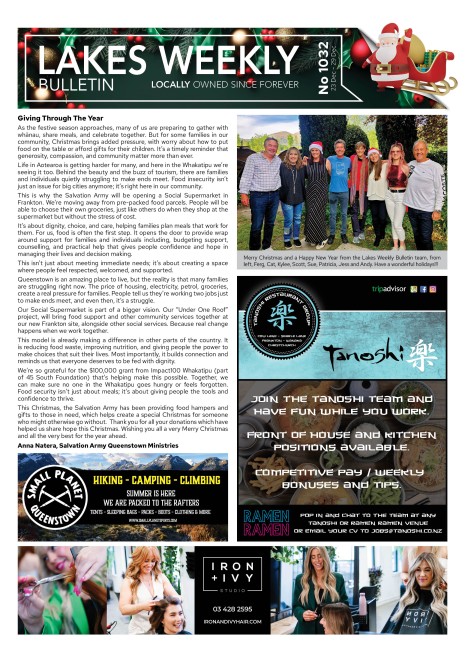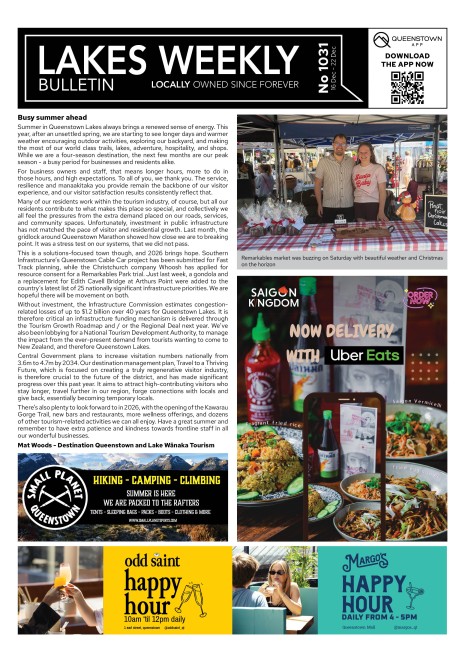Takahē released in the Rees Valley
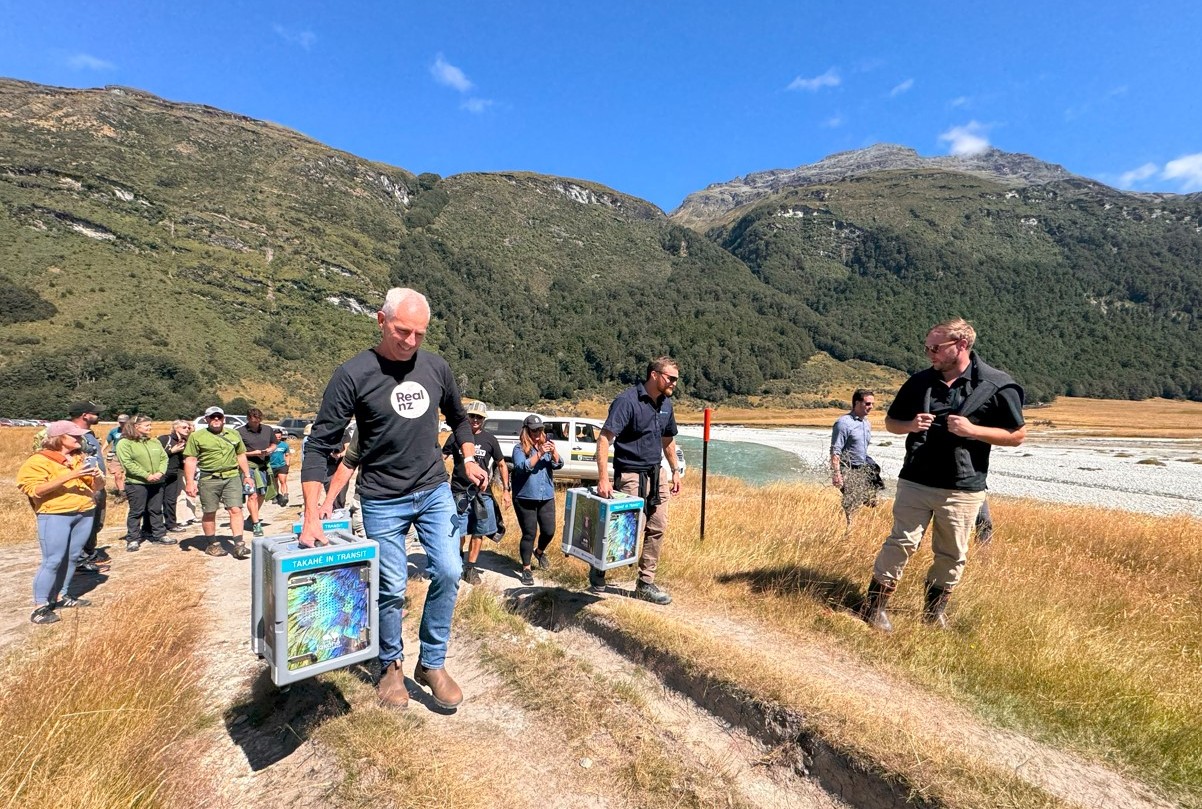
Eighteen takahē were released on to 18,000ha of leasehold land in the Rees Valley near Queenstown yesterday, after three years of major predator control operations.
The release of the endangered flightless birds marked a major milestone for Southern Lakes Sanctuary, which led the land preparation in partnership with the custodians of the Rees Valley Station, Temple Peak Station and Mt Earnslaw Station, and supported by the Department of Conservation (DOC), Fulton Hogan and Ngāi Tahu.
The land area – the largest leasehold site (not public conservation land) in NZ to accommodate wild takahē – has seen a huge number of pests removed since Southern Lakes Sanctuary (SLS) began working on this project in 2022.
Prior to the environmental consortium’s arrival, there were just 139 traps in the valley. Since 2022, a total of 596 traps have removed 1947 predators, including feral cats, stoats and rats, and the traps have been checked 5722 times.
Southern Lakes Sanctuary project director Paul Kavanagh says preparing the site for takahē has been a core focus for his team, but it requires ongoing resources to ensure the land is protected.
“It’s deeply rewarding to see what these proactive measures can lead to, and we’re grateful to the Scott Family, who are excellent custodians of the land,” he says. “The upper Whakatipu catchment area has the potential to sustain a population of up to 500 birds, which could see more than double the national number in the Rees Valley alone within the next 10 years. However, to achieve this, we need to give these taonga the best fighting chance by continually decreasing predator numbers.”
Rees Valley Station owner Iris Scott says it is truly magnificent to have takahē wandering the hills now.
“We already have some great species here, but to re-introduce wildlife is an excellent goal,” she says. “In a way, it’s quite validating to know that we have maintained this environment in a state that it is still a habitat, which species from the past, can return to.”
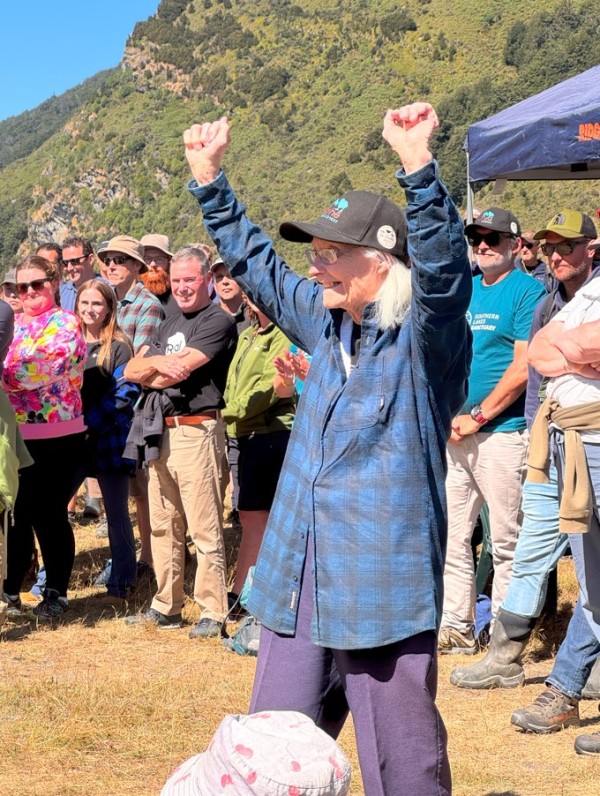
Retired Rees Valley Station farmer Iris Scott rejoicing at the mention that whio could also eventually be released on the property
The Rees Valley is a mix of alpine tussock grassland, which is the optimal landscape for the endemic species. Takahē forage on starchy leaf bases of tussock and tussock seeds. When snow is heavy during the winter months, the bird moves into forests and will feed on the underground rhizomes of the summer green fern.
It is estimated between 70 – 80 takahē will inhabit the Rees Valley by the end of 2025, with two future takahē releases scheduled for March and September.
DOC takahē recovery senior ranger Glen Greaves says the robust pest control in the Rees is reassuring.
“Southern Lakes Sanctuary’s work to reduce predator numbers is a significant factor behind why we chose the Rees,” he says. “Without SLS’ proactive work, we wouldn’t have takahē in the area.”
There are currently 528 takahē in New Zealand, with half of the population in the wild.
Kavanagh says the Rees Valley, which borders Mt Aspiring National Park and UNESCO World Heritage Area, is a strategically important site with the potential for total predator elimination.
"By removing pests in this area, we’re not only protecting takahē, but more than 15 threatened species including kea, pīwauwau/rock wren, pekapeka/bat and braided river birds,” Kavanagh says.
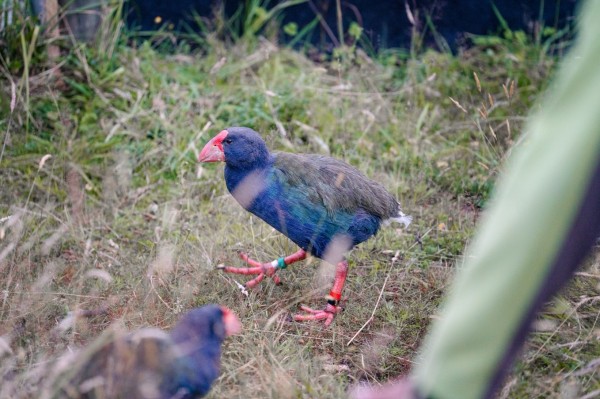
Two takahē. Photo: RealNZ
To sustain the low predator numbers, ongoing funding is required to ensure takahē are protected from the future threat of mammalian predators. SLS’ work in the Rees Valley has been supported by RealNZ, Impact100, Lotteries, Stout Trust, Patagonia, QLDC, CLT, AJ Hackett Bungy New Zealand and Heli Glenorchy.
RealNZ's 2024 Conservation Ball, hosted at Walter Peak in September, raised more than $150,000 to support the translocation.
“It’s incredible to see the real-world impact this funding and our conservation work represents – welcoming this important taonga species to the Rees Valley is an outstanding achievement from a lot of hard work from a lot of people,” RealNZ CEO Dave Beeche says.
The 2023 Conservation Ball’s cause will also reach an important milestone in the coming weeks. The first pairs of kākāriki karaka will be translocated to Pukunui Anchor Island at the end of this month, which the Ball raised an impressive $175,000 to back.
